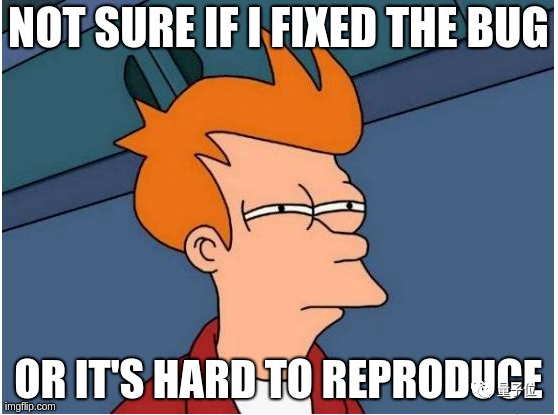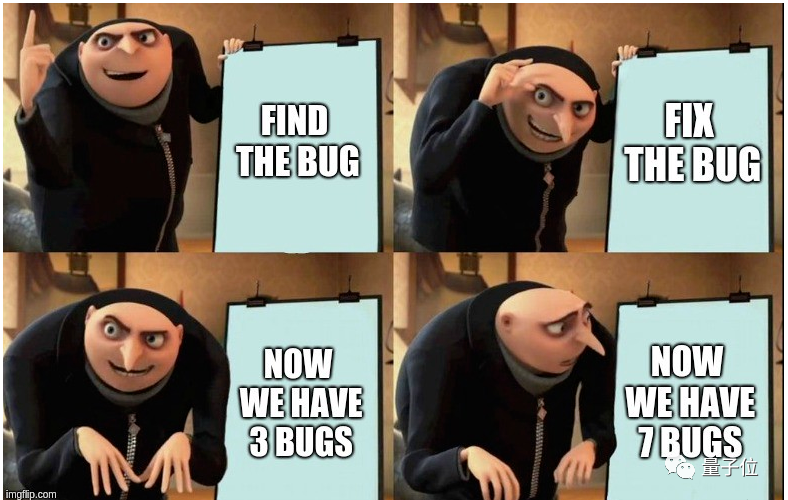 System Tutorial
System Tutorial
 LINUX
LINUX
 The father of Linux was finally persuaded: the 30-year-old Linux kernel C language will be upgraded to C11
The father of Linux was finally persuaded: the 30-year-old Linux kernel C language will be upgraded to C11
The father of Linux was finally persuaded: the 30-year-old Linux kernel C language will be upgraded to C11
Recently there has been news. What is exciting is that the 1989 version of the C language Linux kernel that has been used has finally received a major upgrade. The pace of contemporary technology is unstoppable. Today, the Linux open source community announced a striking plan to upgrade the C language version of the kernel to the C11 standard. It is expected that this major reform will take effect after Linux version 5.18, which is the upcoming May. This important move will bring unlimited potential opportunities to the Linux kernel and help it better adapt to the needs of modern technologies.
This decision was sudden. It only took a week from initiating the question to the official statement. It is not easy to convince Linus Torvalds, the stubborn father of Linux. The reason for the matter seems to be a little accidental. The chain reaction of a bug
The chain reaction of a bugThe origin of the problem comes from a Linux community discussion last week.
A doctoral student named Jakob Koschel discovered such a problem while researching preventing predicted execution vulnerabilities related to kernel linked list primitives.
The Linux kernel extensively uses a doubly linked list defined by struct list_head:
struct list_head {
struct list_head *next, *prev;
};
In addition, the kernel also provides a large number of functions and macros that can be used to traverse and operate linked lists. list_for_each_entry () is one of them, a macro disguised as a control structure. The problem lies in this macro. Assume that the kernel contains the following structure:
struct foo {
int fooness;
struct list_head list;
};
list can be used to create a doubly linked list of the foo structure. Suppose there is a structure called foo_list declared as the head of such a linked list. This linked list can be traversed using the following code:
struct foo *iterator;
list_for_each_entry(iterator, &foo_list, list) {
do_something_with(iterator);
}
/* Should not use iterator here */
The list argument tells the macro the name of the list_head structure within the foo structure. This loop will be executed once for each element in the list, with the iterator pointing to that element. This resulted in a bug in the USB subsystem: the iterator passed to the macro could still be used after exiting the macro.
This is a dangerous thing, so Koschel submitted a fix to fix the bug by stopping using the iterator after the loop.
 persuading Linus
persuading LinusBut Linus Torvalds himself does not like this patch very much, and does not see its relationship with the predicted execution vulnerability. After Koschel explained it in detail, Linus admitted that it was just a common bug.
However, things were not that simple. Linus soon realized the real root cause: the iterator passed to the linked list traversal macro must be declared in a scope outside the loop itself. This non-predictive bug occurs because there is no "declaring variables in loops" in C89.
Macros like list_for_each_entry () essentially always leak the last HEAD entry outside the loop, simply because we can't declare iterator variables in the loop itself.
If you could write an iterator list traversal macro that could declare itself, then the iterator would not be visible outside the loop and no such problem would arise. However, since the kernel is stuck on the C89 standard, variables cannot be declared inside a loop.
Linus decided, let’s upgrade. Maybe it’s time to move to the C99 standard. While it's also over 20 years old, it's at least newer than C89 and allows you to declare variables within a loop.
Since C89 is so old, why hasn’t it changed after so many years? Linus said that it was because we encountered some strange problems in some ancient gcc compiler versions and could not be upgraded casually.
However, now the Linux kernel has raised the minimum requirement for gcc to version 5.1, so those weird bugs in the past should no longer exist.
Arnd Bergmann, another core developer, believes that we can definitely upgrade to C11 or even higher. However, upgrading to C17 or C2x will break support for gcc-5/6/7, so upgrading to C11 is easier to achieve.
In the end, Torvalds agreed with the idea: "Okay, please remind me, let's try it early in the 5.18 merge window." The next move to C11 may cause some unexpected bugs, but if all goes well, next A Linux kernel version will officially move to C11.
The above is the detailed content of The father of Linux was finally persuaded: the 30-year-old Linux kernel C language will be upgraded to C11. For more information, please follow other related articles on the PHP Chinese website!

Hot AI Tools

Undresser.AI Undress
AI-powered app for creating realistic nude photos

AI Clothes Remover
Online AI tool for removing clothes from photos.

Undress AI Tool
Undress images for free

Clothoff.io
AI clothes remover

AI Hentai Generator
Generate AI Hentai for free.

Hot Article

Hot Tools

Notepad++7.3.1
Easy-to-use and free code editor

SublimeText3 Chinese version
Chinese version, very easy to use

Zend Studio 13.0.1
Powerful PHP integrated development environment

Dreamweaver CS6
Visual web development tools

SublimeText3 Mac version
God-level code editing software (SublimeText3)

Hot Topics
 1378
1378
 52
52
 Difference between centos and ubuntu
Apr 14, 2025 pm 09:09 PM
Difference between centos and ubuntu
Apr 14, 2025 pm 09:09 PM
The key differences between CentOS and Ubuntu are: origin (CentOS originates from Red Hat, for enterprises; Ubuntu originates from Debian, for individuals), package management (CentOS uses yum, focusing on stability; Ubuntu uses apt, for high update frequency), support cycle (CentOS provides 10 years of support, Ubuntu provides 5 years of LTS support), community support (CentOS focuses on stability, Ubuntu provides a wide range of tutorials and documents), uses (CentOS is biased towards servers, Ubuntu is suitable for servers and desktops), other differences include installation simplicity (CentOS is thin)
 Detailed explanation of docker principle
Apr 14, 2025 pm 11:57 PM
Detailed explanation of docker principle
Apr 14, 2025 pm 11:57 PM
Docker uses Linux kernel features to provide an efficient and isolated application running environment. Its working principle is as follows: 1. The mirror is used as a read-only template, which contains everything you need to run the application; 2. The Union File System (UnionFS) stacks multiple file systems, only storing the differences, saving space and speeding up; 3. The daemon manages the mirrors and containers, and the client uses them for interaction; 4. Namespaces and cgroups implement container isolation and resource limitations; 5. Multiple network modes support container interconnection. Only by understanding these core concepts can you better utilize Docker.
 Centos stops maintenance 2024
Apr 14, 2025 pm 08:39 PM
Centos stops maintenance 2024
Apr 14, 2025 pm 08:39 PM
CentOS will be shut down in 2024 because its upstream distribution, RHEL 8, has been shut down. This shutdown will affect the CentOS 8 system, preventing it from continuing to receive updates. Users should plan for migration, and recommended options include CentOS Stream, AlmaLinux, and Rocky Linux to keep the system safe and stable.
 How to use docker desktop
Apr 15, 2025 am 11:45 AM
How to use docker desktop
Apr 15, 2025 am 11:45 AM
How to use Docker Desktop? Docker Desktop is a tool for running Docker containers on local machines. The steps to use include: 1. Install Docker Desktop; 2. Start Docker Desktop; 3. Create Docker image (using Dockerfile); 4. Build Docker image (using docker build); 5. Run Docker container (using docker run).
 How to install centos
Apr 14, 2025 pm 09:03 PM
How to install centos
Apr 14, 2025 pm 09:03 PM
CentOS installation steps: Download the ISO image and burn bootable media; boot and select the installation source; select the language and keyboard layout; configure the network; partition the hard disk; set the system clock; create the root user; select the software package; start the installation; restart and boot from the hard disk after the installation is completed.
 What are the backup methods for GitLab on CentOS
Apr 14, 2025 pm 05:33 PM
What are the backup methods for GitLab on CentOS
Apr 14, 2025 pm 05:33 PM
Backup and Recovery Policy of GitLab under CentOS System In order to ensure data security and recoverability, GitLab on CentOS provides a variety of backup methods. This article will introduce several common backup methods, configuration parameters and recovery processes in detail to help you establish a complete GitLab backup and recovery strategy. 1. Manual backup Use the gitlab-rakegitlab:backup:create command to execute manual backup. This command backs up key information such as GitLab repository, database, users, user groups, keys, and permissions. The default backup file is stored in the /var/opt/gitlab/backups directory. You can modify /etc/gitlab
 How to mount hard disk in centos
Apr 14, 2025 pm 08:15 PM
How to mount hard disk in centos
Apr 14, 2025 pm 08:15 PM
CentOS hard disk mount is divided into the following steps: determine the hard disk device name (/dev/sdX); create a mount point (it is recommended to use /mnt/newdisk); execute the mount command (mount /dev/sdX1 /mnt/newdisk); edit the /etc/fstab file to add a permanent mount configuration; use the umount command to uninstall the device to ensure that no process uses the device.
 What to do after centos stops maintenance
Apr 14, 2025 pm 08:48 PM
What to do after centos stops maintenance
Apr 14, 2025 pm 08:48 PM
After CentOS is stopped, users can take the following measures to deal with it: Select a compatible distribution: such as AlmaLinux, Rocky Linux, and CentOS Stream. Migrate to commercial distributions: such as Red Hat Enterprise Linux, Oracle Linux. Upgrade to CentOS 9 Stream: Rolling distribution, providing the latest technology. Select other Linux distributions: such as Ubuntu, Debian. Evaluate other options such as containers, virtual machines, or cloud platforms.



